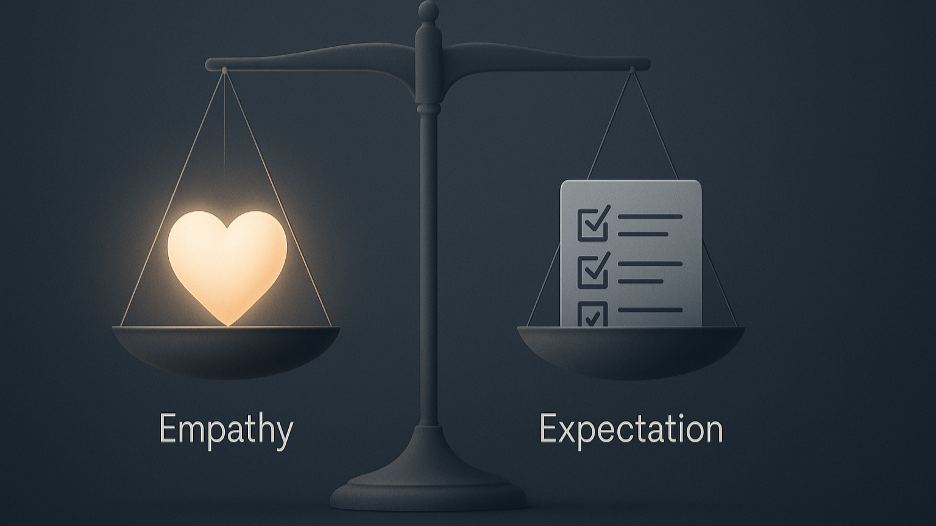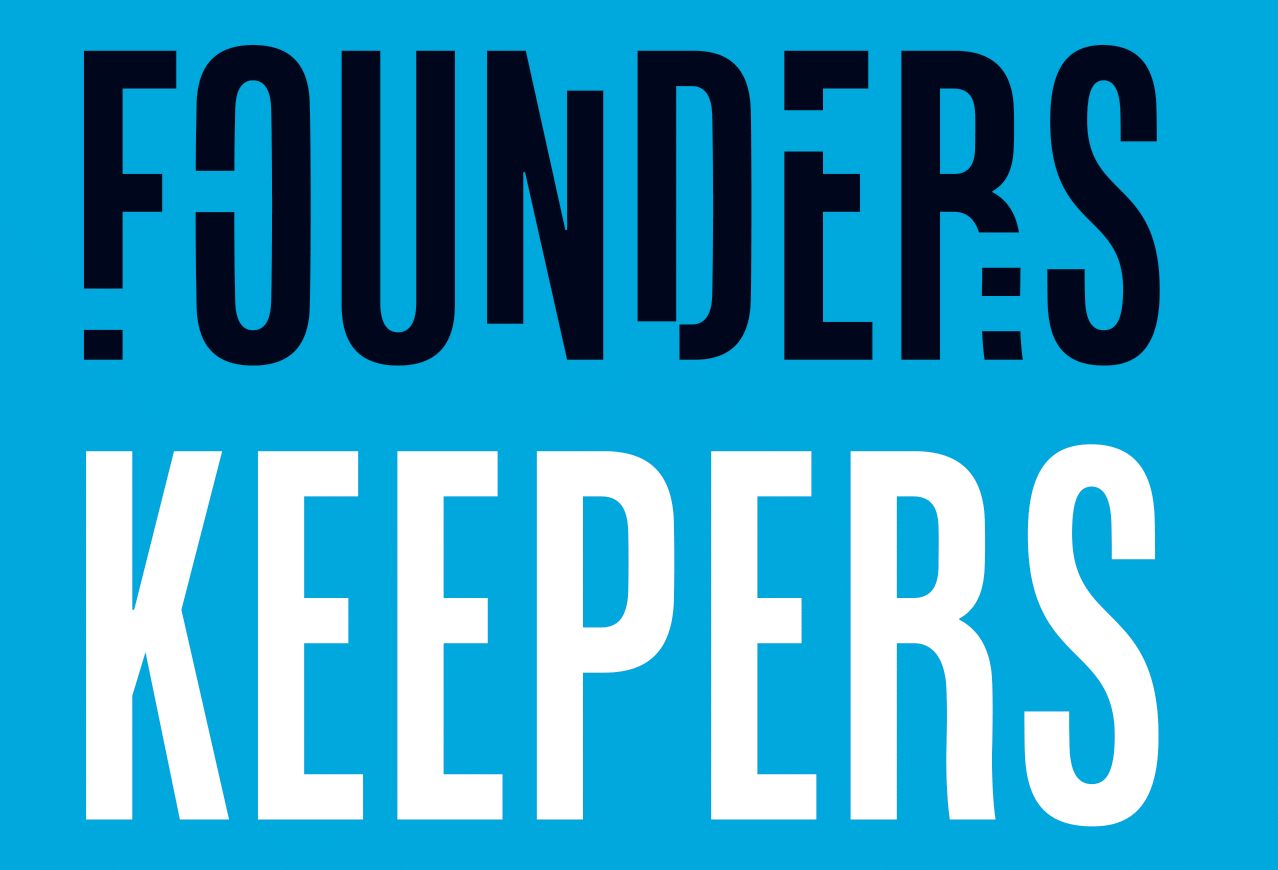Article
Safe to Speak: The Impact of Psychological Safety on Team Dynamics
August 31, 2024
Don't Just lead - create a safe environment for dialogue

The Power of Feeling Safe
Every decision has the potential to make or break a company, but one might assume that hard data and relentless drive are the keys to success. However, there’s an often-overlooked factor that can make or break team performance—psychological safety. This invisible yet potent force can transform teams from dysfunctional groups into collaborative powerhouses. But what is psychological safety, and why is it so crucial?
Psychological safety isn’t just a buzzword; it’s a critical component of team dynamics that, when cultivated, can lead to extraordinary outcomes. It’s not about creating a comfortable environment where no one ever feels challenged. Instead, it’s about ensuring that everyone on the team feels safe enough to take risks, voice their opinions, and share their ideas—no matter how controversial or unconventional they might be. This blog will explore why psychological safety is essential, how it impacts team performance, and what leaders can do to foster it.
What Is Psychological Safety, and Why Should You Care? Psychological safety, a term coined by Harvard researcher Amy Edmondson, is the belief that you won’t be punished or humiliated for speaking up with ideas, questions, concerns, or mistakes. It’s the foundation of open communication, where team members feel free to express themselves without fear of retribution. But why is this so important?
When psychological safety is present, teams thrive. Members are more likely to admit mistakes, share ideas, and challenge each other's thinking, leading to better decision-making and innovation. On the other hand, without it, team members remain silent, disengaged, and afraid to contribute, leading to poor decisions and stagnation.
The value of psychological safety extends beyond just making team members feel good; it’s about enhancing the quality of team interactions. When people feel safe, they are more likely to collaborate, experiment, and engage in productive conflict—all of which are crucial for innovation and progress. In contrast, a lack of psychological safety can lead to groupthink, where dissenting opinions are suppressed, and suboptimal decisions are made. This is why psychological safety isn’t just a “nice-to-have” but a fundamental element of successful teams.
The Dark Side of Silence: How Leaders Kill Open Communication Imagine being on a team where the leader dismisses your ideas, criticizes you openly, or pits team members against each other. This toxic behavior doesn’t just hurt morale—it destroys psychological safety. When leaders create an atmosphere of fear, team members learn to keep quiet, avoid conflict, and hide their true thoughts.
This silence is deadly. Research shows that decisions improve when all perspectives are considered, but when leaders are unwilling to listen, their biases go unchallenged, leading to flawed and often disastrous outcomes. From confirmation bias to overconfidence, unchecked leadership biases can steer an organization off course, all because team members don’t feel safe to speak up.
Leadership plays a pivotal role in either fostering or stifling psychological safety. Leaders who are overly critical or dismissive create a culture of fear, where team members are too intimidated to share their honest thoughts. This not only limits the flow of ideas but also undermines trust and collaboration within the team. In such environments, innovation grinds to a halt, and team members become disengaged, leading to a decline in overall performance. On the flip side, leaders who actively encourage open dialogue and treat every contribution with respect can transform the team dynamic, unlocking the full potential of their team members.
Psychological Safety: The Secret Ingredient in Google’s Recipe for Success Google’s Project Aristotle, a massive study on teamwork, revealed that psychological safety is the most critical factor in effective teams. When team members feel safe, they’re more likely to take risks, admit they don’t know something, and ask for help. This openness leads to better problem-solving, more creativity, and stronger collaboration. In contrast, teams lacking psychological safety struggle with communication, fail to innovate, and often make poor decisions. The takeaway? Psychological safety isn’t just a nice-to-have; it’s a must-have for any team that wants to succeed.
Google’s findings underscore the importance of creating a team environment where psychological safety is prioritized. When team members feel psychologically safe, they’re more willing to voice dissenting opinions, which can lead to more robust discussions and better decision-making. Furthermore, psychological safety encourages continuous learning within the team. When mistakes are seen as opportunities for growth rather than failures to be punished, teams can learn and adapt quickly, leading to sustained success in a rapidly changing business landscape.
The Leader’s Role: Creating a Safe Space for Open Dialogue As a leader, you hold the keys to creating psychological safety. It starts with how you treat your team members. Are you respectful? Do you listen without judgment? Do you encourage everyone to speak up, even if their ideas are half-formed? These behaviors are crucial in fostering an environment where everyone feels safe to contribute.
But it’s not just about being nice. Leaders must also be willing to call out negative behavior that threatens the team’s psychological safety. This means addressing disrespect, silos, and competitive attitudes that undermine collaboration. At the same time, positive behavior—like supportive and collaborative actions—should be recognized and rewarded.
Leaders also need to model vulnerability. Admitting when you don’t have all the answers or when you’ve made a mistake can set a powerful example for your team. It shows that it’s okay to be human and that mistakes are part of the learning process. This openness fosters a culture where team members feel comfortable taking risks and being honest about their challenges. Furthermore, leaders should focus on creating an inclusive environment where diverse perspectives are welcomed and valued. This not only enhances psychological safety but also drives innovation by incorporating a wide range of ideas and viewpoints.
The Ripple Effect: How Psychological Safety Transforms Teams When psychological safety is established, the effects are profound. Teams become more resilient, innovative, and engaged. They’re willing to tackle tough problems, admit when they’re wrong, and build on each other’s ideas. This level of openness and trust not only leads to better decisions but also creates a culture of continuous learning and improvement.
In a world where business is more competitive than ever, psychological safety gives teams the edge they need to succeed. It’s the silent catalyst that turns average teams into unstoppable forces, capable of achieving extraordinary results.
The ripple effects of psychological safety extend beyond individual teams and can positively impact the entire organization. When psychological safety is woven into the fabric of a company’s culture, it encourages open communication at all levels, fosters cross-functional collaboration, and drives collective problem-solving. Moreover, it creates an environment where employees are more engaged and satisfied with their work, leading to higher retention rates and overall organizational success. In essence, psychological safety is the foundation upon which high-performing, innovative organizations are built.
Don’t Just Lead—Create a Safe Environment for Dialogue Psychological safety might be an intangible concept, but its impact is anything but. For leaders who want to build high-performing teams, fostering a safe environment where open communication thrives is non-negotiable. So, take a step back, evaluate your leadership style, and ask yourself: Are you creating a space where your team feels safe to speak up? If not, it’s time to make some changes—because the success of your team depends on it.
Creating psychological safety is not a one-time effort but an ongoing commitment. It requires consistent action, reflection, and adjustment to ensure that all team members feel valued, heard, and respected. By prioritizing psychological safety, leaders can unlock the full potential of their teams, driving innovation, collaboration, and success in ways that might have previously seemed out of reach. Don’t just lead—create a safe space for greatness to emerge.
Psychological safety isn’t just a buzzword; it’s a critical component of team dynamics that, when cultivated, can lead to extraordinary outcomes. It’s not about creating a comfortable environment where no one ever feels challenged. Instead, it’s about ensuring that everyone on the team feels safe enough to take risks, voice their opinions, and share their ideas—no matter how controversial or unconventional they might be. This blog will explore why psychological safety is essential, how it impacts team performance, and what leaders can do to foster it.
What Is Psychological Safety, and Why Should You Care? Psychological safety, a term coined by Harvard researcher Amy Edmondson, is the belief that you won’t be punished or humiliated for speaking up with ideas, questions, concerns, or mistakes. It’s the foundation of open communication, where team members feel free to express themselves without fear of retribution. But why is this so important?
When psychological safety is present, teams thrive. Members are more likely to admit mistakes, share ideas, and challenge each other's thinking, leading to better decision-making and innovation. On the other hand, without it, team members remain silent, disengaged, and afraid to contribute, leading to poor decisions and stagnation.
The value of psychological safety extends beyond just making team members feel good; it’s about enhancing the quality of team interactions. When people feel safe, they are more likely to collaborate, experiment, and engage in productive conflict—all of which are crucial for innovation and progress. In contrast, a lack of psychological safety can lead to groupthink, where dissenting opinions are suppressed, and suboptimal decisions are made. This is why psychological safety isn’t just a “nice-to-have” but a fundamental element of successful teams.
The Dark Side of Silence: How Leaders Kill Open Communication Imagine being on a team where the leader dismisses your ideas, criticizes you openly, or pits team members against each other. This toxic behavior doesn’t just hurt morale—it destroys psychological safety. When leaders create an atmosphere of fear, team members learn to keep quiet, avoid conflict, and hide their true thoughts.
This silence is deadly. Research shows that decisions improve when all perspectives are considered, but when leaders are unwilling to listen, their biases go unchallenged, leading to flawed and often disastrous outcomes. From confirmation bias to overconfidence, unchecked leadership biases can steer an organization off course, all because team members don’t feel safe to speak up.
Leadership plays a pivotal role in either fostering or stifling psychological safety. Leaders who are overly critical or dismissive create a culture of fear, where team members are too intimidated to share their honest thoughts. This not only limits the flow of ideas but also undermines trust and collaboration within the team. In such environments, innovation grinds to a halt, and team members become disengaged, leading to a decline in overall performance. On the flip side, leaders who actively encourage open dialogue and treat every contribution with respect can transform the team dynamic, unlocking the full potential of their team members.
Psychological Safety: The Secret Ingredient in Google’s Recipe for Success Google’s Project Aristotle, a massive study on teamwork, revealed that psychological safety is the most critical factor in effective teams. When team members feel safe, they’re more likely to take risks, admit they don’t know something, and ask for help. This openness leads to better problem-solving, more creativity, and stronger collaboration. In contrast, teams lacking psychological safety struggle with communication, fail to innovate, and often make poor decisions. The takeaway? Psychological safety isn’t just a nice-to-have; it’s a must-have for any team that wants to succeed.
Google’s findings underscore the importance of creating a team environment where psychological safety is prioritized. When team members feel psychologically safe, they’re more willing to voice dissenting opinions, which can lead to more robust discussions and better decision-making. Furthermore, psychological safety encourages continuous learning within the team. When mistakes are seen as opportunities for growth rather than failures to be punished, teams can learn and adapt quickly, leading to sustained success in a rapidly changing business landscape.
The Leader’s Role: Creating a Safe Space for Open Dialogue As a leader, you hold the keys to creating psychological safety. It starts with how you treat your team members. Are you respectful? Do you listen without judgment? Do you encourage everyone to speak up, even if their ideas are half-formed? These behaviors are crucial in fostering an environment where everyone feels safe to contribute.
But it’s not just about being nice. Leaders must also be willing to call out negative behavior that threatens the team’s psychological safety. This means addressing disrespect, silos, and competitive attitudes that undermine collaboration. At the same time, positive behavior—like supportive and collaborative actions—should be recognized and rewarded.
Leaders also need to model vulnerability. Admitting when you don’t have all the answers or when you’ve made a mistake can set a powerful example for your team. It shows that it’s okay to be human and that mistakes are part of the learning process. This openness fosters a culture where team members feel comfortable taking risks and being honest about their challenges. Furthermore, leaders should focus on creating an inclusive environment where diverse perspectives are welcomed and valued. This not only enhances psychological safety but also drives innovation by incorporating a wide range of ideas and viewpoints.
The Ripple Effect: How Psychological Safety Transforms Teams When psychological safety is established, the effects are profound. Teams become more resilient, innovative, and engaged. They’re willing to tackle tough problems, admit when they’re wrong, and build on each other’s ideas. This level of openness and trust not only leads to better decisions but also creates a culture of continuous learning and improvement.
In a world where business is more competitive than ever, psychological safety gives teams the edge they need to succeed. It’s the silent catalyst that turns average teams into unstoppable forces, capable of achieving extraordinary results.
The ripple effects of psychological safety extend beyond individual teams and can positively impact the entire organization. When psychological safety is woven into the fabric of a company’s culture, it encourages open communication at all levels, fosters cross-functional collaboration, and drives collective problem-solving. Moreover, it creates an environment where employees are more engaged and satisfied with their work, leading to higher retention rates and overall organizational success. In essence, psychological safety is the foundation upon which high-performing, innovative organizations are built.
Don’t Just Lead—Create a Safe Environment for Dialogue Psychological safety might be an intangible concept, but its impact is anything but. For leaders who want to build high-performing teams, fostering a safe environment where open communication thrives is non-negotiable. So, take a step back, evaluate your leadership style, and ask yourself: Are you creating a space where your team feels safe to speak up? If not, it’s time to make some changes—because the success of your team depends on it.
Creating psychological safety is not a one-time effort but an ongoing commitment. It requires consistent action, reflection, and adjustment to ensure that all team members feel valued, heard, and respected. By prioritizing psychological safety, leaders can unlock the full potential of their teams, driving innovation, collaboration, and success in ways that might have previously seemed out of reach. Don’t just lead—create a safe space for greatness to emerge.
share this
Related Articles
Related Articles

The Nicest Boss in the World He was adored. He remembered birthdays, checked in on people’s families, and stayed late helping fix slides no one asked him to touch. His team called him “the best boss we’ve ever had.” He was also running on fumes. Behind the warm smile was a leader quietly burning out — drowning in everyone else’s problems, too empathetic for his own good. If you’re a leader who prides yourself on caring deeply, this might sting a little: empathy, taken too far, becomes control in disguise. Empathy’s Secret Shadow Empathy is essential for leadership. It builds loyalty, safety, and trust. But the same trait that makes people feel seen can also make them dependent. When you can’t tolerate someone else’s discomfort, you start protecting them from it. You step in to fix, to soothe, to rescue. It looks noble. It feels generous. But it quietly steals agency — theirs and yours. Your team stops growing because you’re doing their emotional labor. You stop leading because you’re managing feelings instead of outcomes. That’s the hidden cost of care. The Emotional Guilt Loop Over-empathetic leaders live in a constant tug-of-war between compassion and guilt. They think: “They’re already stretched — I can’t pile more on.” “If I push harder, I’ll seem uncaring.” “I’ll just do it myself; it’s easier.” Sound familiar? That’s not empathy anymore. That’s guilt masquerading as kindness. And guilt makes terrible business decisions. Because guilt doesn’t guide you toward what’s right. It just steers you away from what feels uncomfortable. A Founder’s Story One founder I coached, let’s call her Lina, led with heart. She built her company around “people first.” And she meant it. But somewhere along the way, “people first” turned into “me last.” She couldn’t say no. She kept saving underperformers, approving vacations during crunch time, rewriting others’ work to spare them stress. Her team adored her — until they didn’t. Because beneath her helpfulness was quiet resentment. And resentment always leaks. The breakthrough came when she realized something simple but hard: “I was protecting people from learning the hard parts of growth.” That’s when she started leading again instead of parenting. When Caring Becomes Control Here’s the paradox: the more you care, the more you risk over-controlling. You jump in to fix not because you don’t trust them, but because you feel for them. It’s empathy turned inward — I can’t stand watching them struggle. But leadership isn’t about eliminating discomfort. It’s about using it wisely. People grow by stretching, not by being spared. When you save someone from every failure, you’re also saving them from competence. The Biology of Burnout Chronic empathy triggers chronic stress. When you absorb other people’s emotions all day, your nervous system never gets a break. You start mirroring everyone’s anxiety like an emotional amplifier. Your brain thinks you’re in crisis — even when you’re not. That’s why over-caring leaders are often the first to burn out. Their compassion becomes constant cortisol. The irony? The leaders who want to create safety for others end up unsafe themselves. How to Care Without Carrying Feel, then filter. It’s okay to feel someone’s frustration. Just don’t keep it. Ask: “Is this mine to hold?” Help through accountability. Say, “I know this is tough, and I also need you to take ownership.” The and matters. Let discomfort be developmental. When a team member struggles, resist rescuing. Stay present, not protective. Coach before you comfort. Instead of “Don’t worry,” try, “What do you think your next move is?” Reframe empathy as empowerment. Caring isn’t about absorbing pain; it’s about believing people can handle it. Funny but True One exec I worked with told me, “Every time I stop helping, I feel like a jerk.” I said, “No — you feel like a leader. It just takes a while to tell the difference.” He laughed and said, “So… you’re telling me leadership feels bad at first?” I said, “Exactly. Growth always does.” The Cultural Ripple Effect When leaders overfunction, teams underfunction. When leaders hold space instead of taking space, teams rise. Empathy should expand others, not consume you. The healthiest cultures balance care and candor — support and stretch. They normalize struggle as part of the process instead of something to be hidden or rescued. That’s what real compassion looks like in motion. The Maturity of Tough Empathy Empathy without boundaries is exhaustion. Empathy with boundaries is wisdom. The mature version of empathy doesn’t say, “I’ll protect you.” It says, “I believe you can handle this — and I’ll walk beside you while you do.” That’s not cold. That’s developmental. Your Challenge This Week Notice where you’re rescuing someone instead of coaching them. Pause before you step in. Ask yourself, Am I helping because they need it — or because I need to feel helpful? Then take one small risk: let them handle it. They’ll probably surprise you. And you’ll feel lighter than you have in months. Final Word Caring is beautiful. It’s what makes you human. But unchecked empathy turns leaders into emotional pack mules — carrying what was never theirs to bear. Real leadership is still full of heart. It just remembers that compassion without accountability isn’t love. It’s fear. And the moment you stop rescuing everyone, you finally start freeing them — and yourself.s)

The Smart Leader’s Blind Spot It’s strange how often the smartest people make the worst decisions under pressure. They don’t lose IQ. They lose perspective. I’ve seen this happen more times than I can count. A sharp, decisive executive starts second-guessing every move. They overanalyze, overwork, and overcontrol — all in the name of being “thorough.” They think they’re being rational. But underneath the spreadsheets and meetings is something far less logical. It’s fear. The Fear That Doesn’t Look Like Fear We think of fear as panic — sweating, shaking, obvious. But most leadership fear hides behind competence. It shows up as perfectionism, busyness, overcommitment, indecision. It sounds like, “Let’s get more data.” “Let’s not rush this.” “Let’s keep this one close.” That’s not analysis. That’s avoidance with a better vocabulary. When fear runs the show, the goal subtly shifts from making the right decision to avoiding the wrong one. And those two things are worlds apart. The Cost of Fear-Based Leadership When leaders operate from fear, everything tightens. They stop listening. They rush to defend. They play small when the company needs boldness. They keep people who are loyal over people who are competent — because loyalty feels safer. And here’s the real tragedy: the team starts copying the fear. They become cautious, compliant, quiet. Pretty soon, no one’s leading anymore. They’re all managing risk — mostly emotional risk. A CEO’s Moment of Truth One CEO I coached — brilliant, confident, deeply human — was terrified of being wrong in front of his board. He masked it well. On the outside: decisive. Inside: a constant hum of anxiety. After a tough quarter, he admitted, “I realized half my decisions weren’t based on strategy — they were based on protecting my image.” That moment of honesty was the start of his maturity curve. Once he could name the fear, it stopped running his show. He didn’t become fearless. He became aware. And awareness is what turns reaction into wisdom. Why Fear Feels Safer Than Clarity Fear has a strange way of convincing us it’s caution. Caution whispers, “Slow down and look.” Fear screams, “Don’t move.” The first sharpens judgment. The second paralyzes it. And the more we listen to fear, the more it disguises itself as prudence. That’s why emotional maturity isn’t about suppressing fear. It’s about being able to say, “Ah, that’s fear talking — not fact.” How Fear Distorts the Mind Here’s what happens when fear hijacks leadership: Tunnel vision: You fixate on the immediate threat and forget the big picture. Confirmation bias: You start looking for data that validates your anxiety. Short-termism: You make safe decisions that feel good now and cause pain later. Blame shifting: You protect your ego by pushing ownership outward. The mind gets smaller. The leader gets reactive. The company gets stuck. The Maturity Shift Emotional maturity isn’t about being unshakable. It’s about staying curious in the presence of fear. Mature leaders don’t pretend they’re fearless. They just don’t let fear make the decisions. They pause, breathe, and ask, “What part of this is data, and what part is my insecurity talking?” That single question can change everything. A Founder’s Story A founder I worked with once said, “I’m not afraid — I just have high standards.” But as we unpacked it, he realized those “high standards” were actually a way to control outcomes. He feared disappointment — his own and others’. When he finally stopped trying to protect his reputation and started protecting his clarity, his decisions got faster and cleaner. The business didn’t just grow — it started breathing again. Because when you stop trying to look right, you finally have room to be right. Funny, But True I once asked a CEO what he’d do differently if he weren’t afraid of failing. He said, “Probably the same things I’m doing now — just with less Advil.” That’s the thing: most leaders already know what to do. Fear just makes it hurt more. How to Lead Without Fear (Even When It’s There) Name it early. The sooner you recognize fear, the less power it has. Ask yourself, “What’s the story fear’s telling me right now?” Reframe mistakes as tuition. You’ll still pay for errors — might as well learn something from them. Separate identity from outcome. A bad decision doesn’t mean a bad leader. It means a leader who’s still learning — like everyone else. Keep one truth-teller nearby. Someone who loves you enough to tell you when you’re acting from ego. Practice micro-bravery. Tell one hard truth a day. Say “I don’t know” once a week. Let discomfort become strength training. The Paradox of Fear Fear doesn’t make you weak. It means you care. But if you never face it, it becomes your compass — and it always points backward. Courage, maturity, clarity — they’re not opposites of fear. They’re what happen when you stop running from it. Your Challenge This Week Next time you feel that knot in your stomach — before a board meeting, a tough conversation, a high-stakes call — pause. Ask yourself: What am I afraid might happen? Then ask: What might happen if I act from clarity instead of fear? That’s not therapy. That’s leadership hygiene. Final Word The mark of maturity isn’t fearlessness. It’s self-awareness. You can’t control your fear. But you can choose whether it sits in the driver’s seat or the passenger’s. Great leaders don’t wait for fear to disappear. They lead with it beside them — quietly, respectfully — but never in charge.

The Charisma Illusion Charisma gets all the press. It fills conference rooms, wins funding rounds, and dominates the LinkedIn highlight reel. We treat it like the gold standard of leadership — as if volume equals vision. But charisma is a sugar high. It spikes energy, then crashes trust. Composure, on the other hand — quiet, grounded, centered composure — is the kind of influence that lasts. It doesn’t light up a room; it settles one. When things go sideways, it’s not the charismatic leader people look for. It’s the calm one. The Crisis Test Picture this. The product just failed. The client’s furious. Your team’s pacing like trapped cats. Two leaders walk in. One storms into action — loud, fast, “What the hell happened here?” The other walks in slowly, looks around, and says, “Okay, let’s breathe. What do we know so far?” The first one gets attention. The second one gets results. That’s emotional geometry — the calmest person in the room reshapes everyone else’s state. Why Calm Is the Real Power When you stay composed, you’re not just managing your emotions — you’re regulating the entire system. Here’s the neuroscience behind it: people mirror the nervous system of whoever has the most authority. If you’re grounded, they sync to your rhythm. If you’re frantic, they sync to that instead. You don’t need to lecture anyone on resilience. You just have to model it. It’s not charisma that makes people trust you; it’s the quiet sense that you’re not going to lose your mind when things get hard. Charisma’s Half-Life Charisma is a spark. It can ignite a team — but if there’s no composure beneath it, the whole thing burns out. You’ve seen this movie before: the leader who rallies everyone with a passionate all-hands speech, then disappears into reaction mode when things get messy. Charisma without composure is like caffeine without sleep. You’re awake, but you’re not steady. Composure doesn’t get the applause. It gets the loyalty. A Founder’s Story One founder I worked with — I’ll call him David — was known for being a “high-voltage” guy. He could pitch an investor, fire up a crowd, or talk anyone into anything. But his team? They were walking on eggshells. His energy filled every room, but it left no oxygen for anyone else. During one session, I asked, “When you raise your voice, what happens to theirs?” He went quiet. That was the moment he understood that his passion — the thing he was most proud of — had become the team’s anxiety. A year later, his team described him differently: “He’s still intense, but steady. We trust him more now.” He didn’t lose charisma; he layered it with composure. The Calm Before the Influence Here’s what composure actually looks like: You listen longer. Because real influence starts with attention, not argument. You breathe before reacting. That pause isn’t weakness; it’s power management. You let silence do the work. Charisma fills every space; composure creates space for others to step in. You own your tone. You realize your sighs, your speed, your face — they’re all communication tools whether you intend them or not. You choose steadiness over certainty. People don’t need you to know everything. They just need to know you’re okay not knowing. Funny But True A client once told me, “When I’m calm in a meeting, people assume I’m hiding something.” I said, “Good. Let them wonder.” That’s how unfamiliar calm has become. In some cultures, composure looks radical — even suspicious. But it’s exactly what people crave in a world that never shuts up. Why Charisma Is Easier (and More Addictive) Charisma gets feedback. You see the energy rise, you feel the applause. It’s visible. Composure feels invisible — until you lose it. No one thanks you for staying calm during a crisis. But they remember it when deciding whether to follow you into the next one. That’s why maturity in leadership means getting comfortable with the quiet wins — the meeting that didn’t spiral, the argument that didn’t happen, the team that stayed focused because you did. The Emotional Geometry in Practice Think of composure as geometry because emotions move through space. When you enter a room, you alter its emotional shape. If you radiate calm, people’s shoulders drop. Their thinking widens. They start contributing. If you radiate stress, the room contracts. People shrink. Ideas vanish. Influence isn’t what you say. It’s the energy field you create. Your Challenge This Week Before your next high-stakes meeting, pause outside the door. Take one deep breath and ask yourself: What energy does this room need from me right now? Then bring only that. Nothing more. You’ll be amazed how fast everything slows down when you do. Final Word Charisma captures attention. Composure builds trust. One is about how loudly you shine; the other is about how steadily you glow. The leader who can stay centered when everyone else is spinning doesn’t just have influence — they are the influence. And that’s the kind of power that never burns out.
STAY UP TO DATE
GET PATH'S LATEST
Receive bi-weekly updates from the church, and get a heads up on upcoming events.
Contact Us








